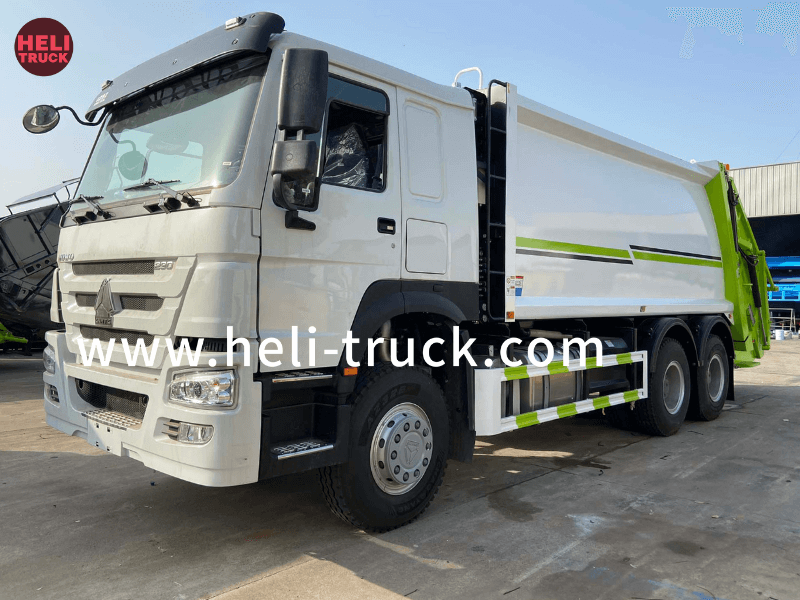Introduction
Garbage trucks have been an essential part of waste management systems for decades, playing a crucial role in keeping our cities and communities clean and hygienic. Over the years, advancements in technology have revolutionized the way garbage trucks operate, making them more efficient, environmentally friendly, and cost-effective. In this article, we will explore the evolution of garbage truck technology, from the early days of manual collection to the cutting-edge innovations of the future.
Early Days of Garbage Collection
Historically, garbage collection was a labor-intensive and time-consuming process. Before the invention of specialized garbage trucks, waste was often collected by hand or with the help of horse-drawn carts. Workers would roam the streets, picking up trash from households and businesses and transporting it to designated disposal sites.
The first motorized garbage trucks appeared in the early 20th century, offering a more efficient and sanitary way to collect and transport waste. These early trucks were simple in design, consisting of a chassis with a storage compartment for garbage and a crew of workers to load and unload the waste. While a significant improvement over manual collection methods, these early garbage trucks were still relatively primitive compared to the advanced technologies we have today.
Advancements in Garbage Truck Technology
Over the years, garbage truck technology has undergone significant advancements to improve efficiency, safety, and environmental impact. One of the most notable developments in garbage truck technology is the introduction of automated side loaders (ASLs) and front loaders, which have revolutionized the way waste is collected and processed.
Automated Side Loaders (ASLs)
ASLs are equipped with mechanical arms that can lift and empty garbage bins without the need for manual labor. This technology has greatly increased the efficiency of garbage collection, allowing one operator to service multiple bins in a fraction of the time it would take with traditional methods. ASLs are commonly used for residential waste collection and are designed to handle various types of waste, including recyclables and organic materials.
Front Loaders
Front loaders are another type of garbage truck that has become increasingly popular in urban areas. These trucks are equipped with hydraulic arms at the front of the vehicle, which can lift and empty large dumpsters into the storage compartment. Front loaders are commonly used for commercial waste collection and are capable of handling large volumes of waste in a single trip. This technology has significantly improved the speed and efficiency of waste collection in busy urban environments.
Environmental Considerations
In recent years, there has been a growing focus on making garbage trucks more environmentally friendly. One of the key ways this is being achieved is through the use of alternative fuels and advanced emissions control systems. Many modern garbage trucks are now powered by compressed natural gas (CNG) or electric batteries, reducing greenhouse gas emissions and improving air quality in urban areas.

In addition to alternative fuels, garbage truck manufacturers are also exploring the use of lightweight materials and aerodynamic designs to reduce fuel consumption and improve overall efficiency. By incorporating these sustainable practices into garbage truck design, operators can reduce their environmental footprint and contribute to a cleaner, healthier planet.
Future Innovations
Looking ahead, the future of garbage truck technology is filled with exciting possibilities. One area of innovation that holds great promise is the use of autonomous vehicles for waste collection. Autonomous garbage trucks have the potential to revolutionize the industry by reducing operating costs, improving safety, and increasing efficiency.
Another area of development is the integration of smart technologies, such as sensors and data analytics, to optimize waste collection routes and schedules. By leveraging real-time data and predictive analytics, garbage truck operators can streamline their operations, reduce fuel consumption, and minimize environmental impact.
Flatbed truck load visibility has come a long way since the early days of manual waste collection. From the introduction of motorized trucks to the development of automated side loaders and front loaders, the industry has seen significant advancements that have transformed the way waste is collected and processed. With a growing emphasis on sustainability and environmental responsibility, garbage truck manufacturers are continuing to innovate and develop new technologies that will shape the future of waste management. By embracing these advancements and adopting best practices, we can create cleaner, greener communities for generations to come.
